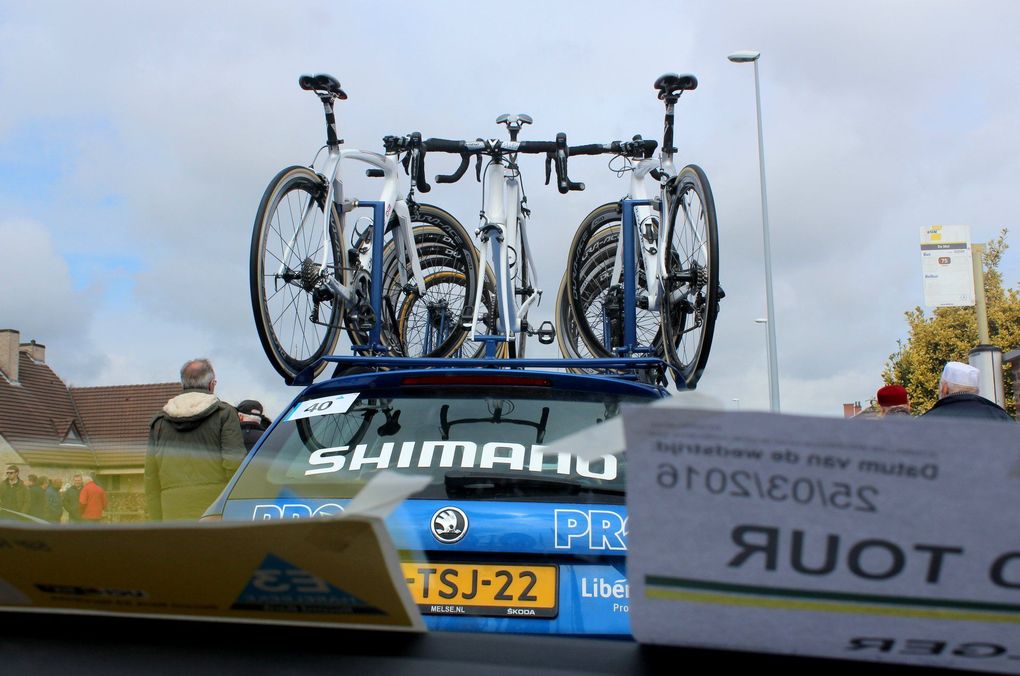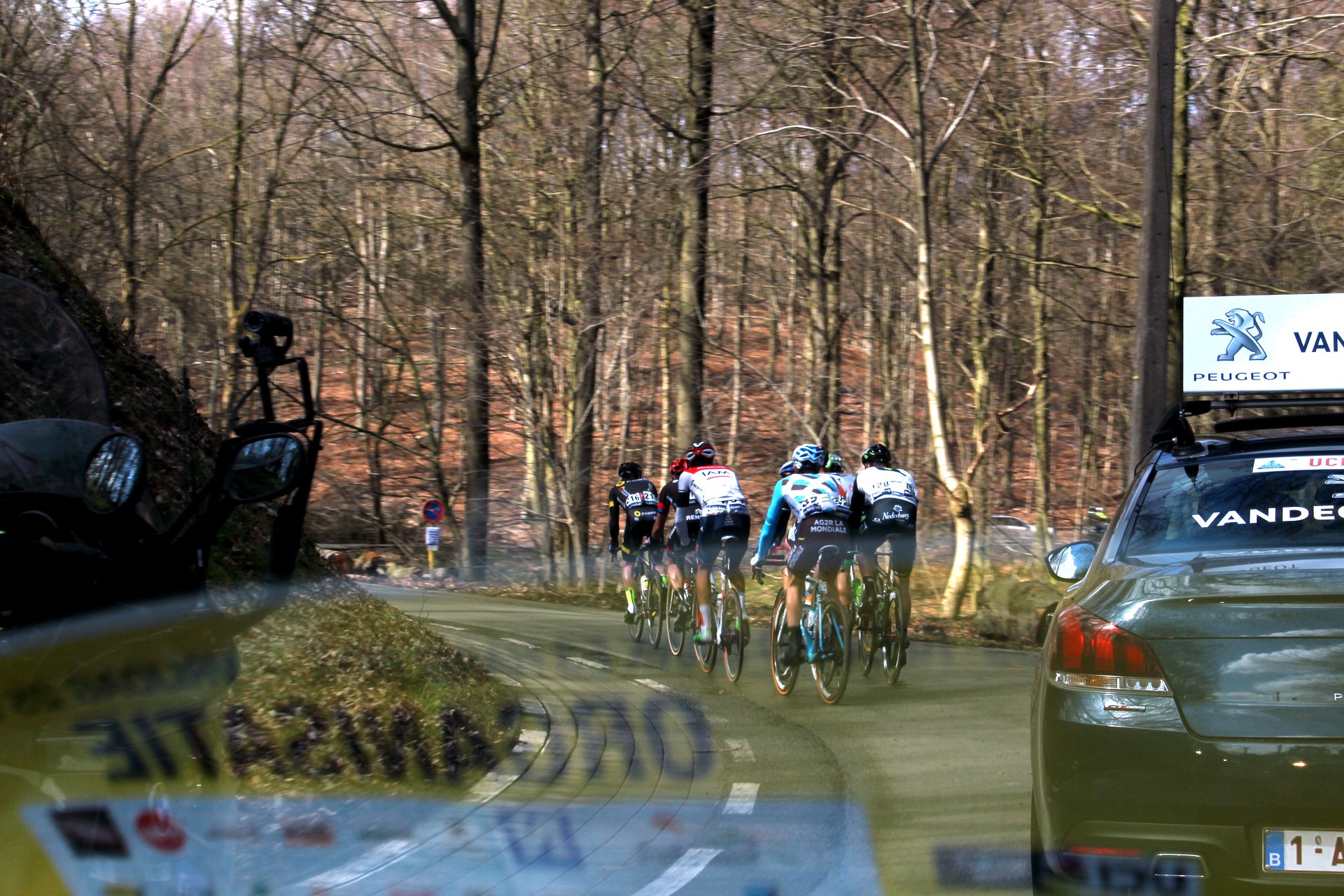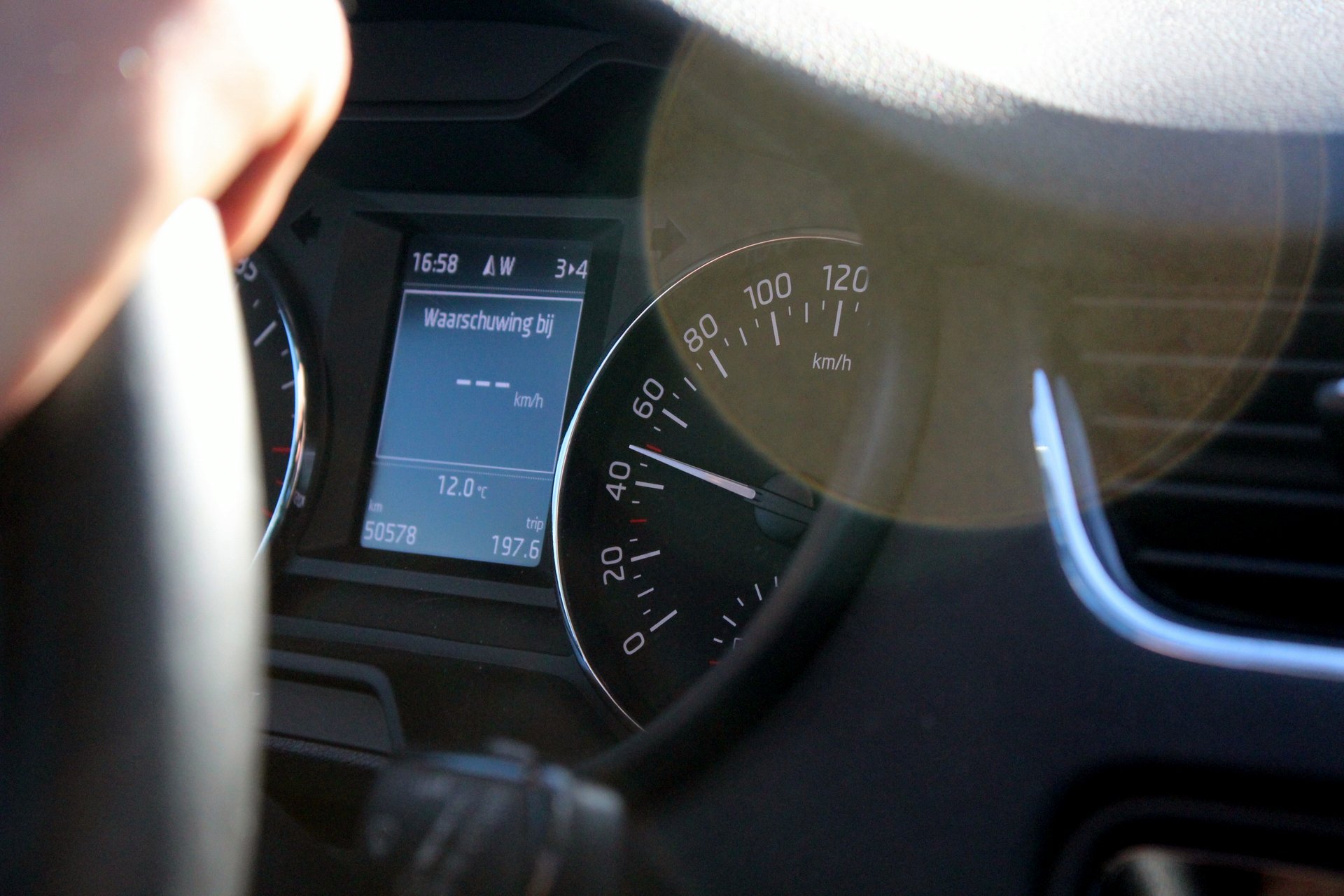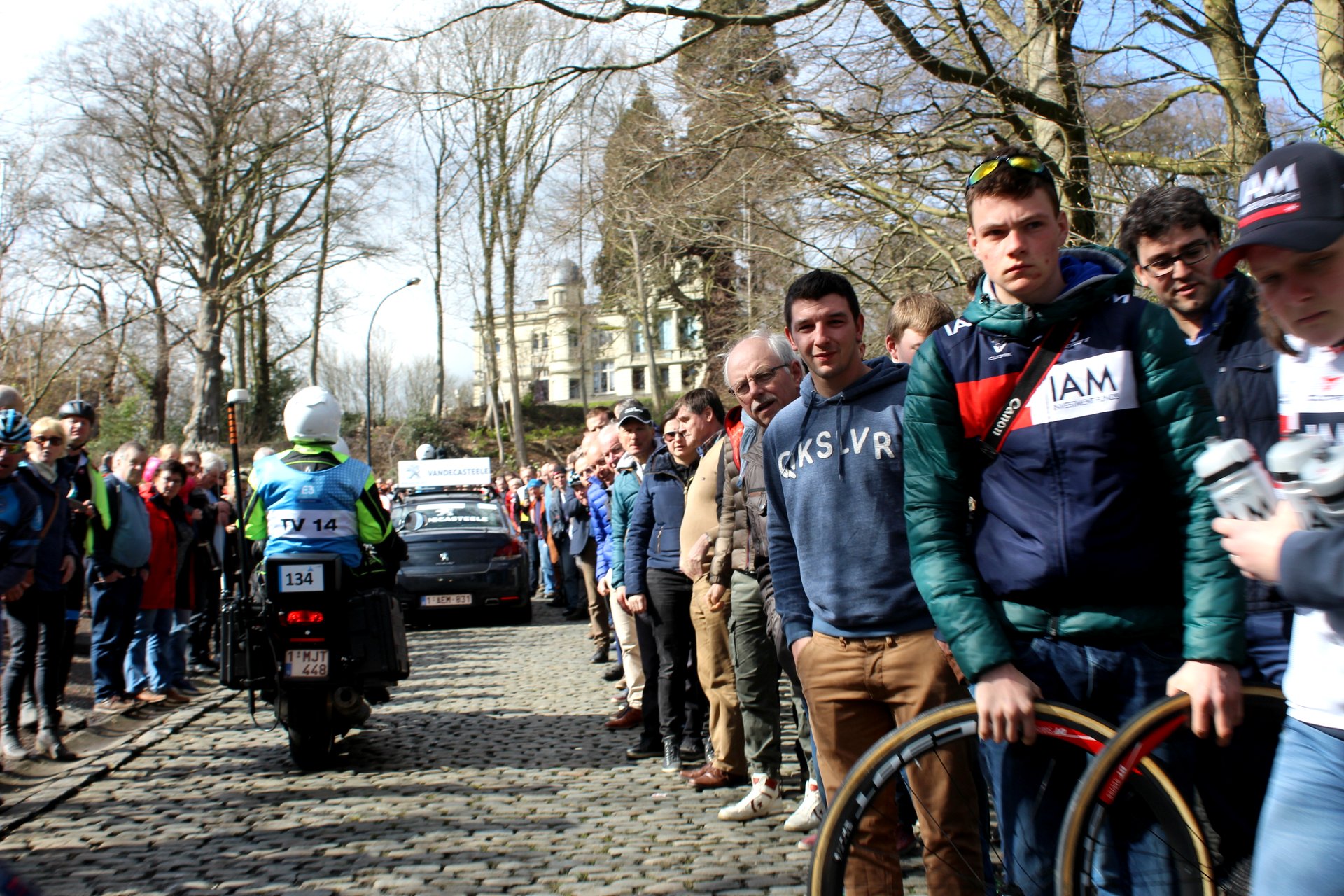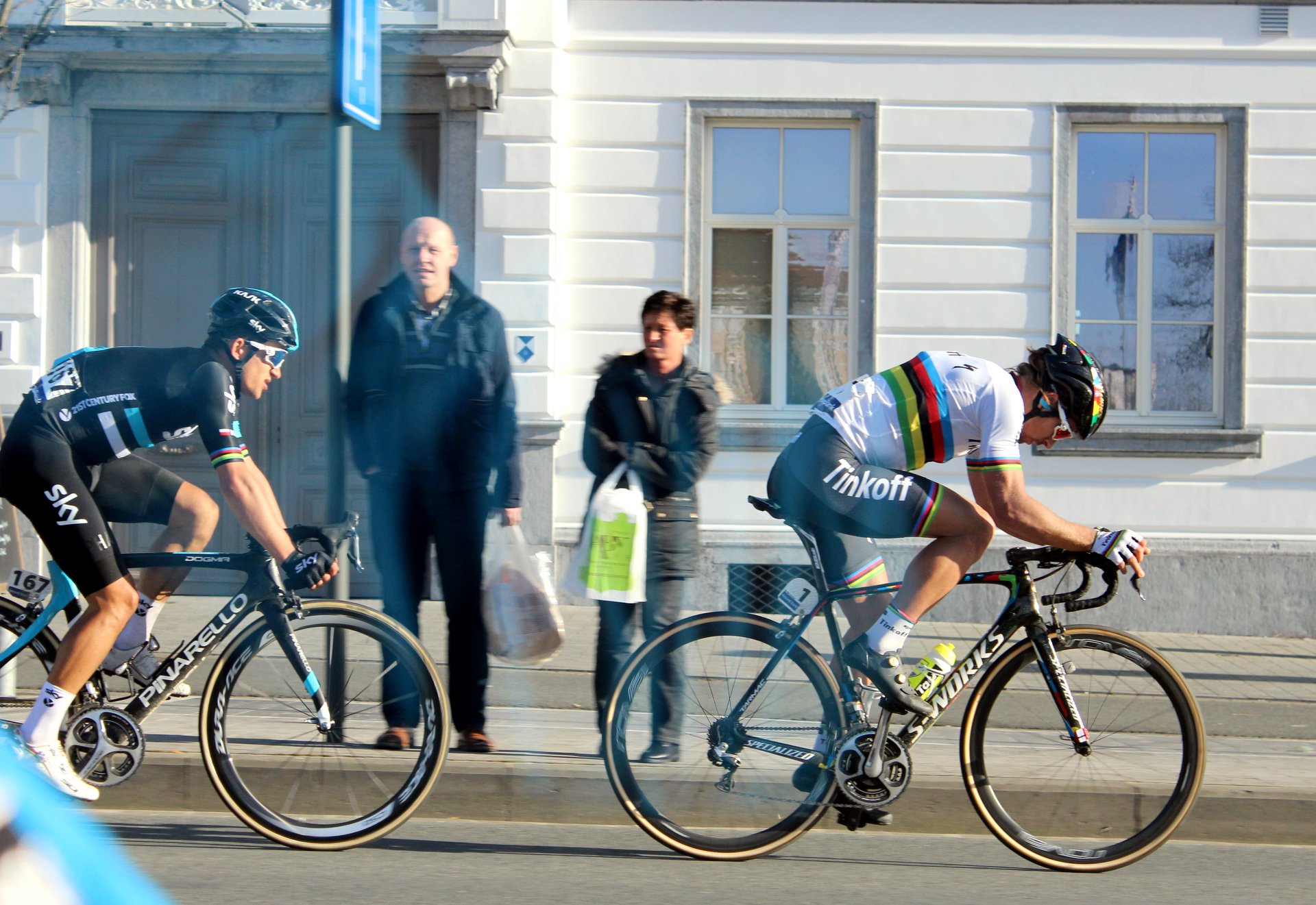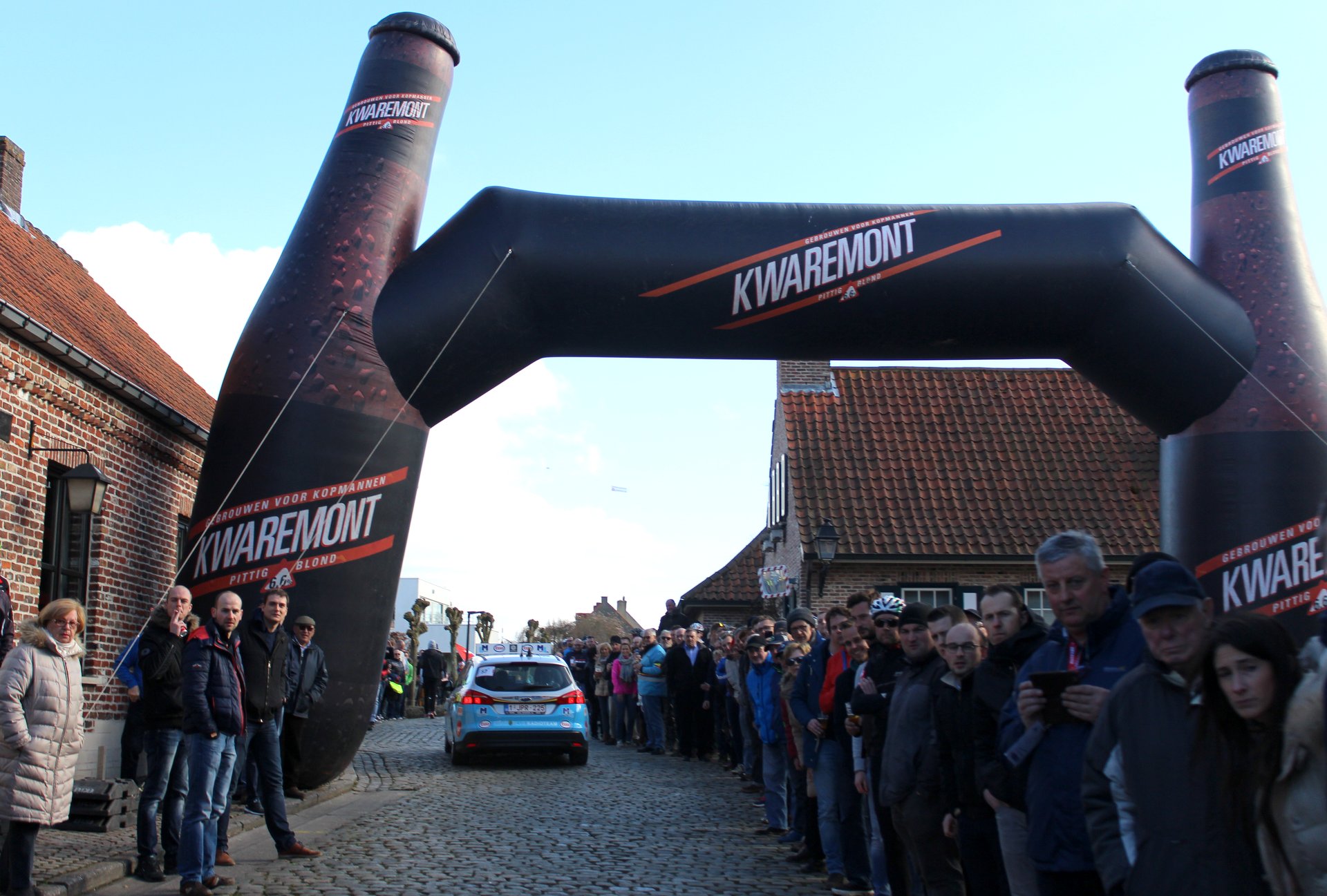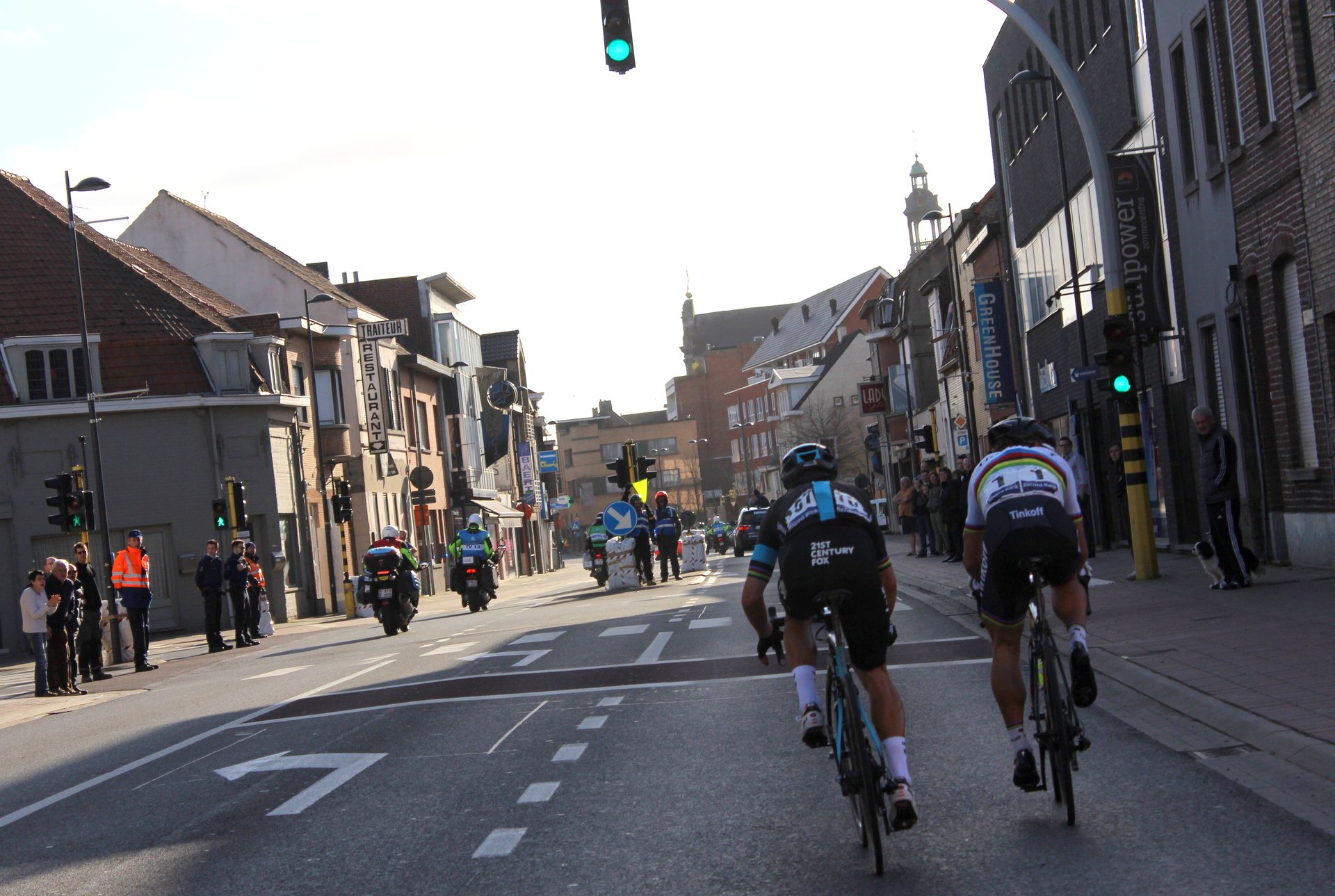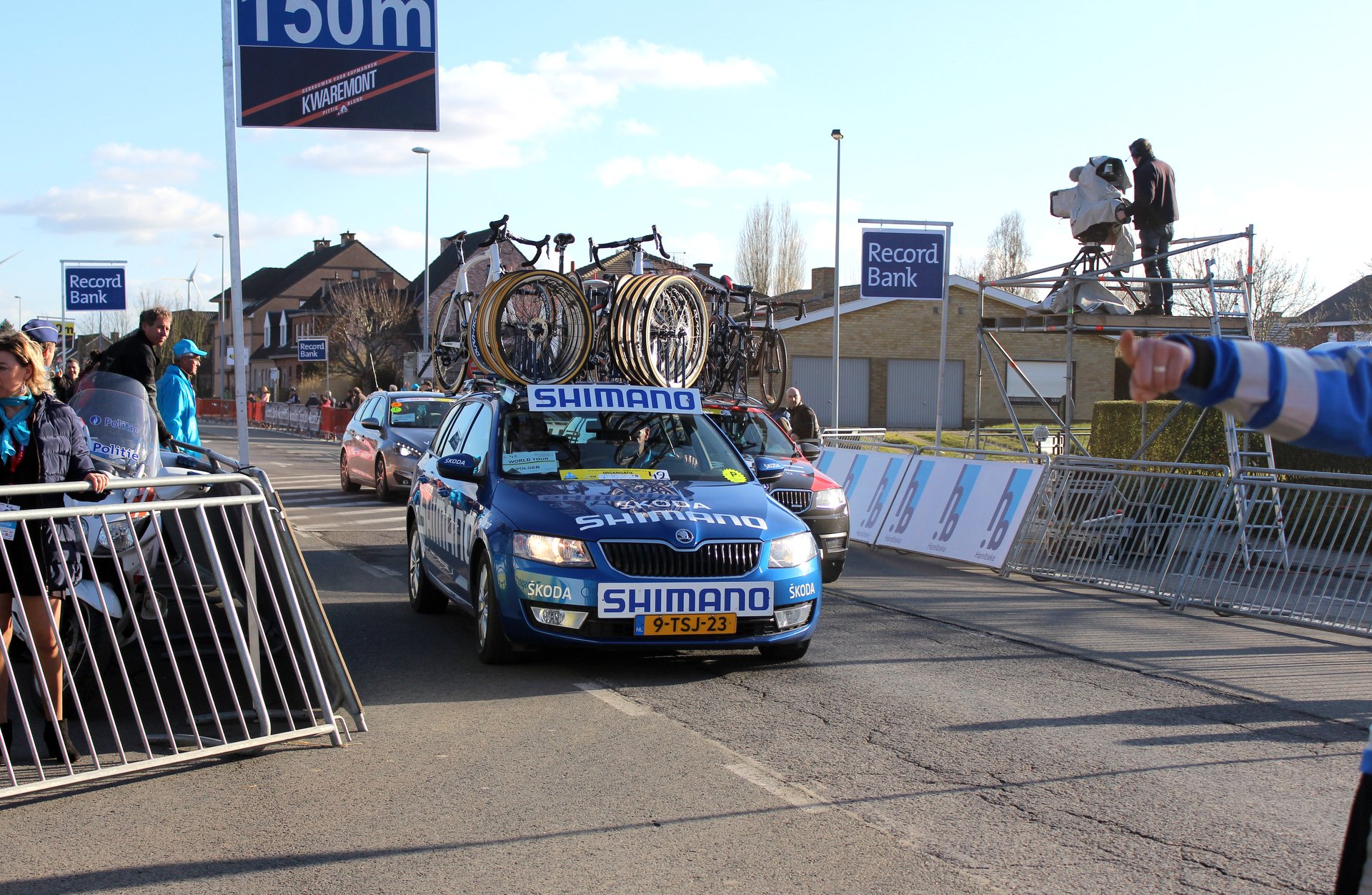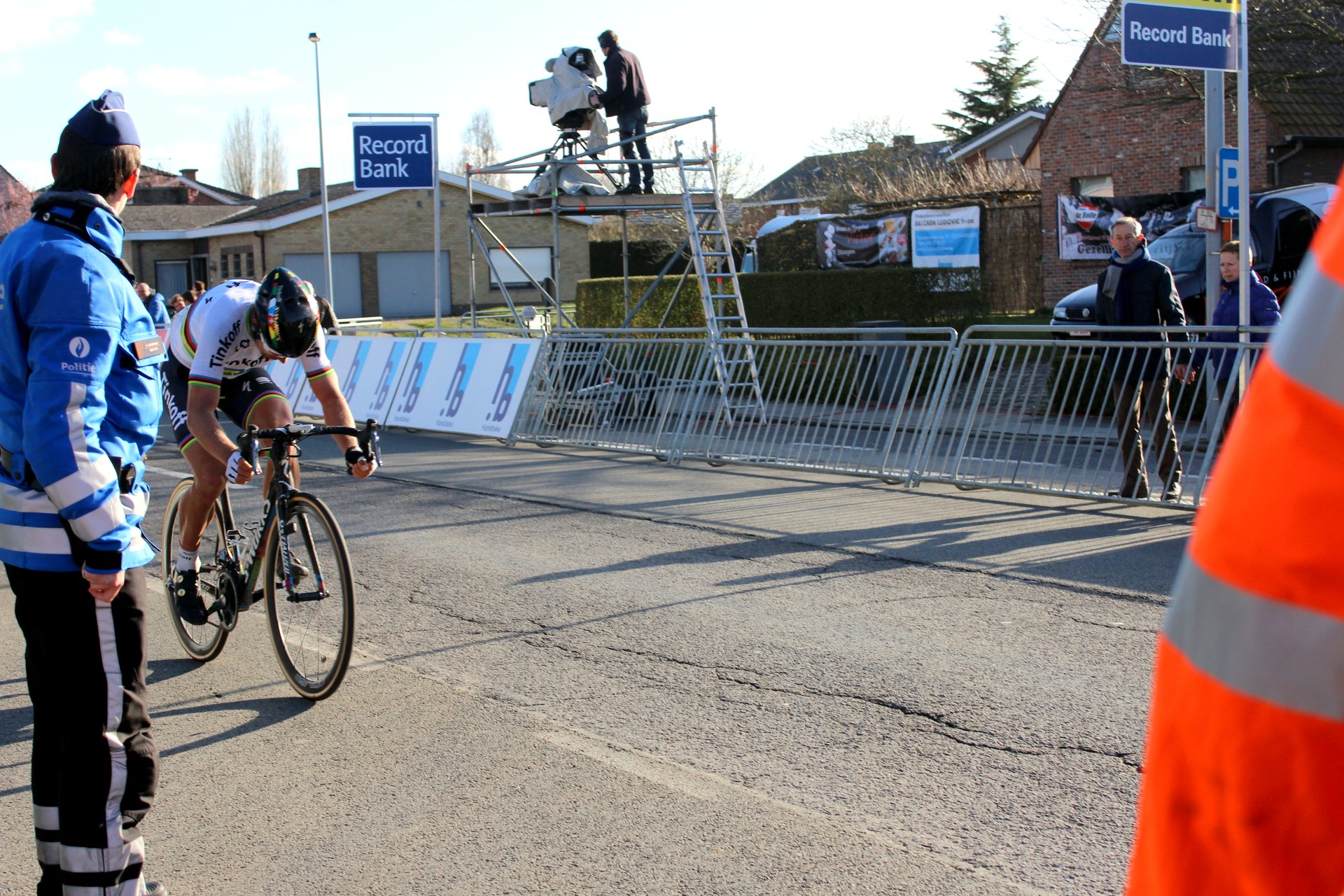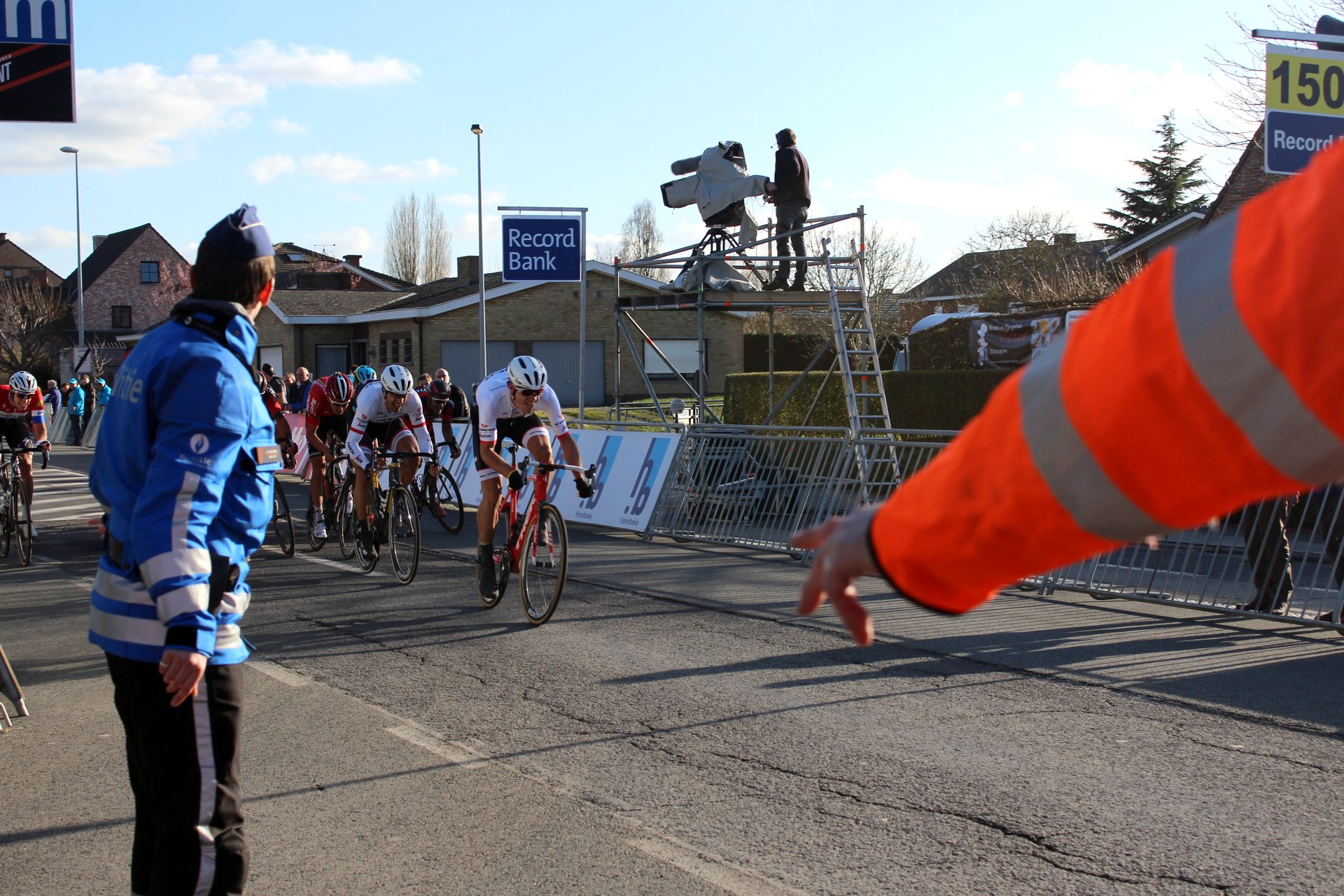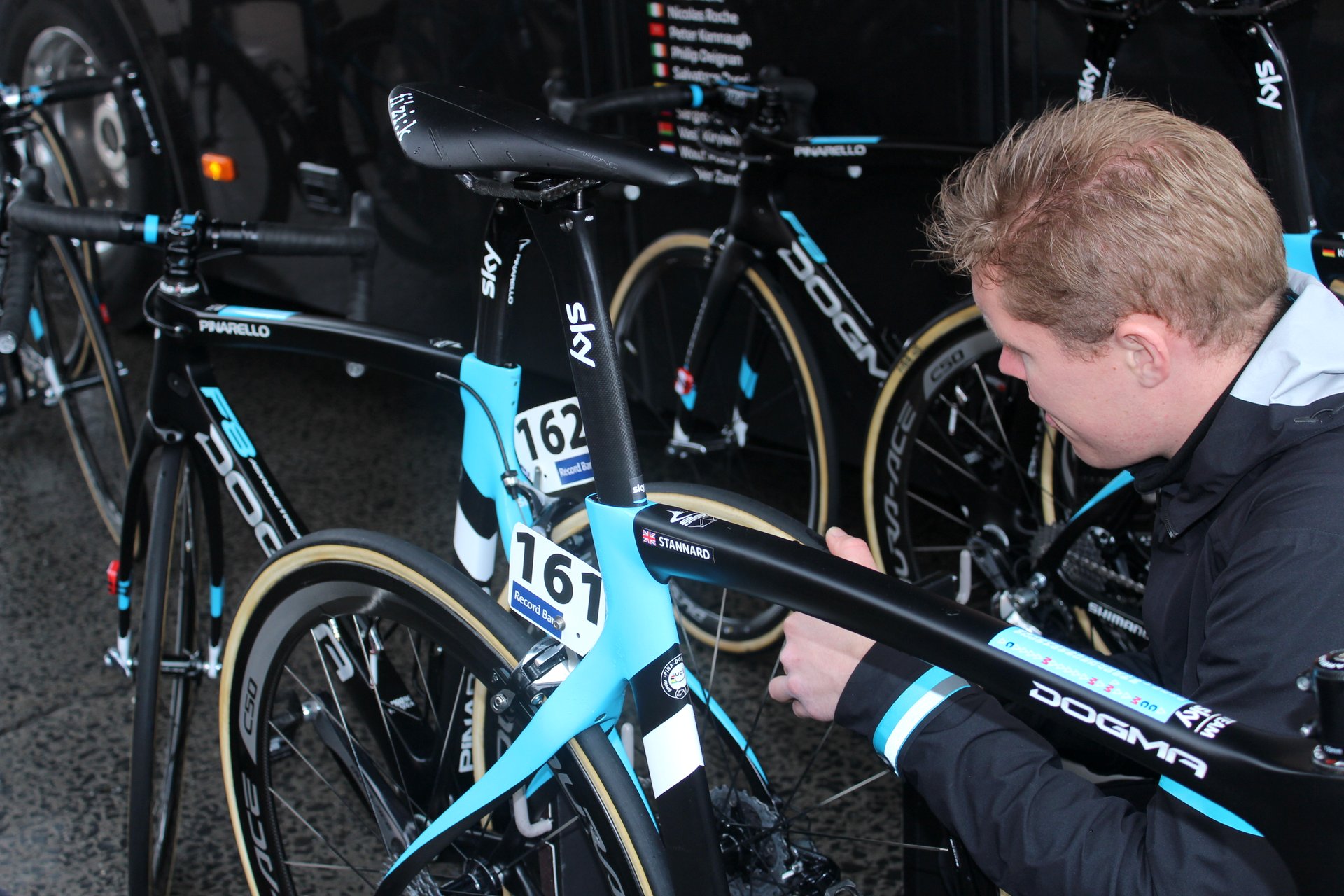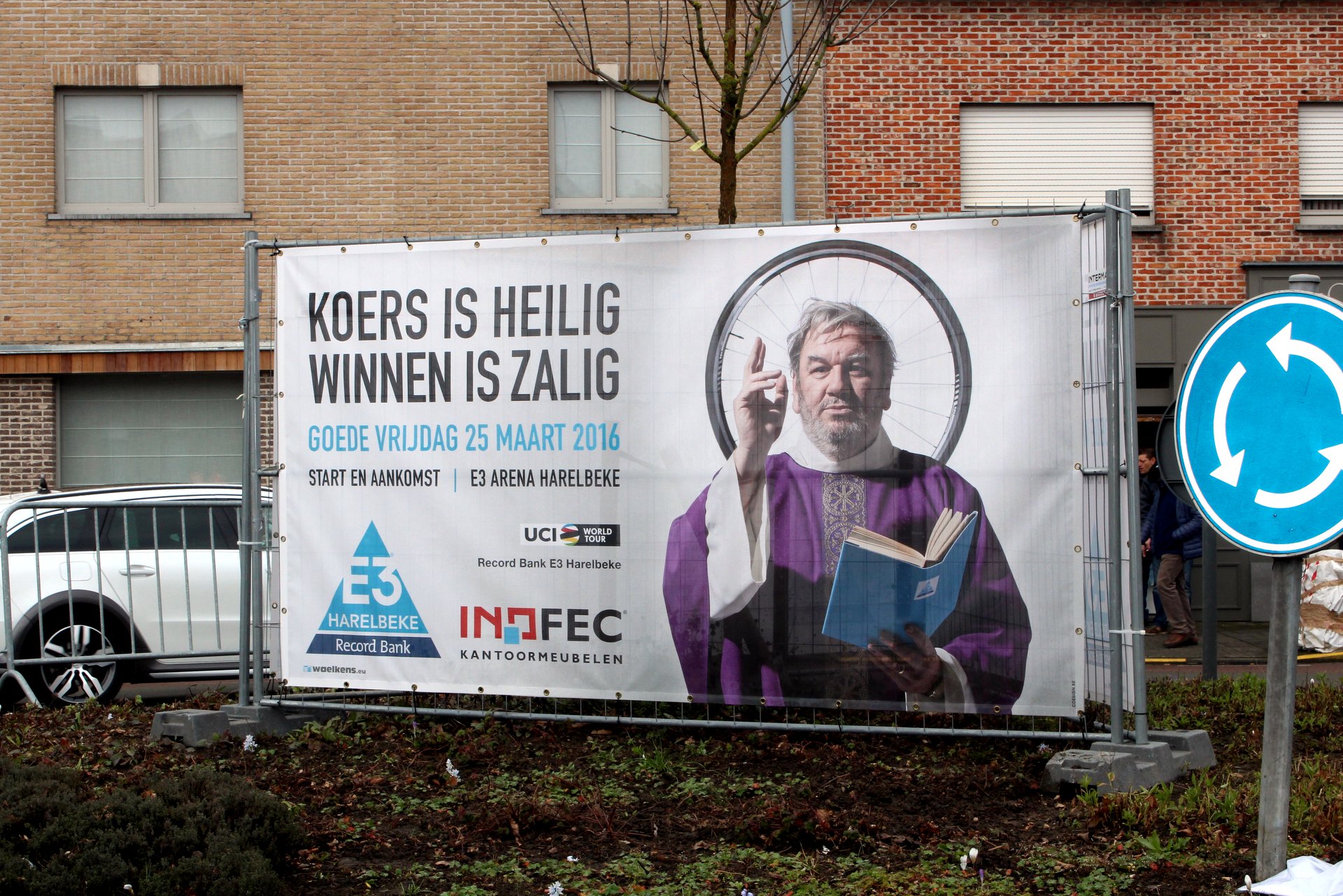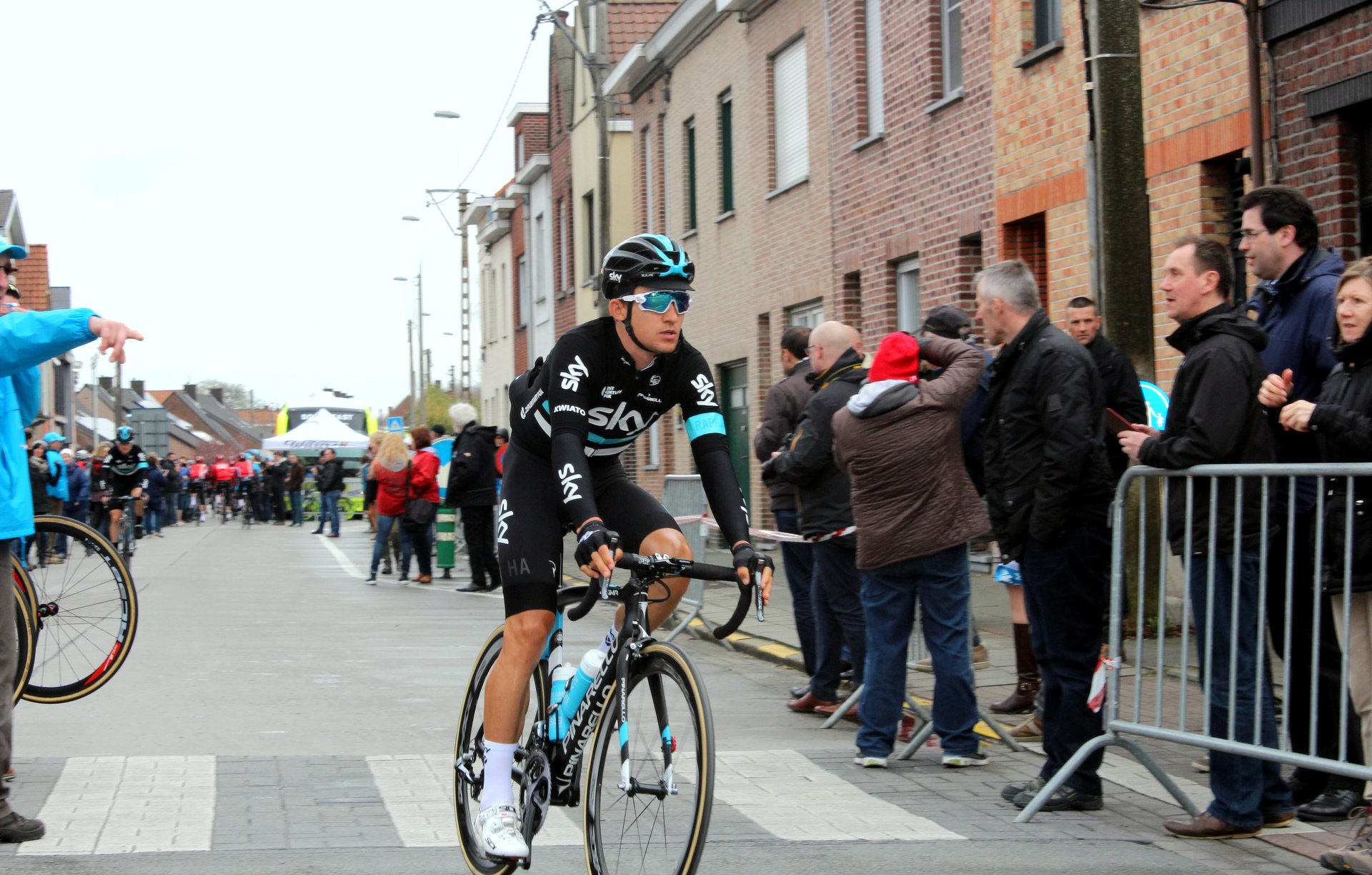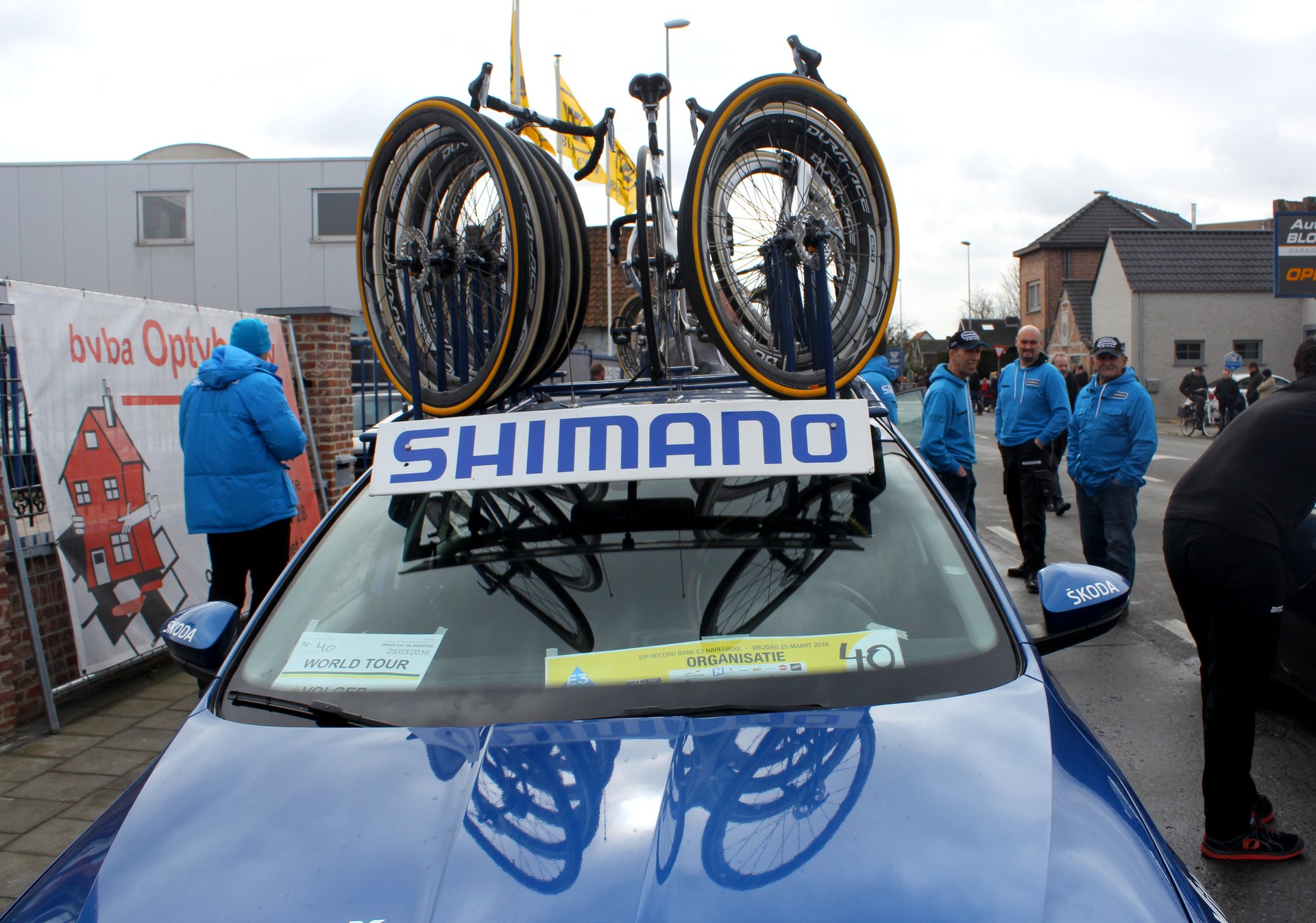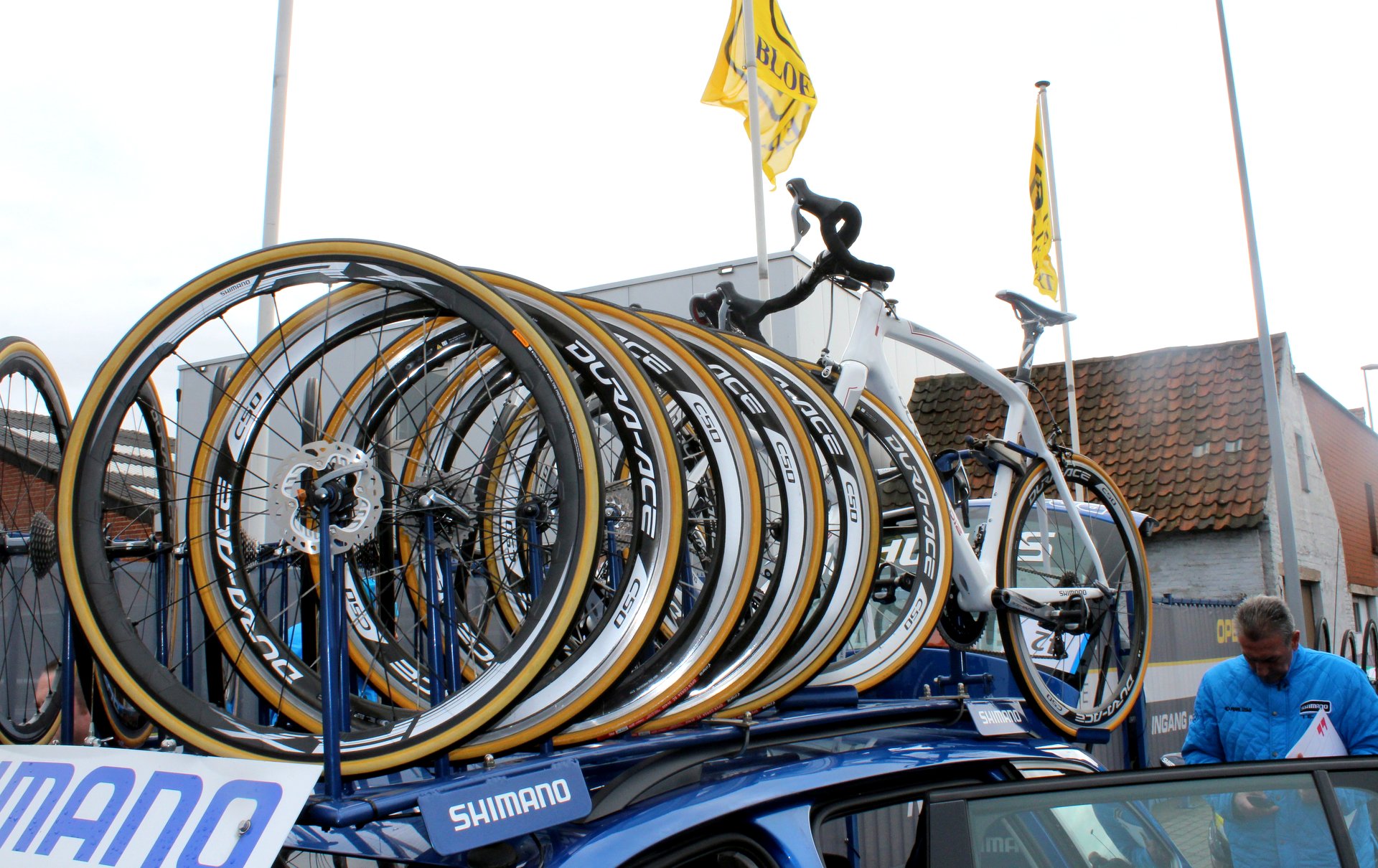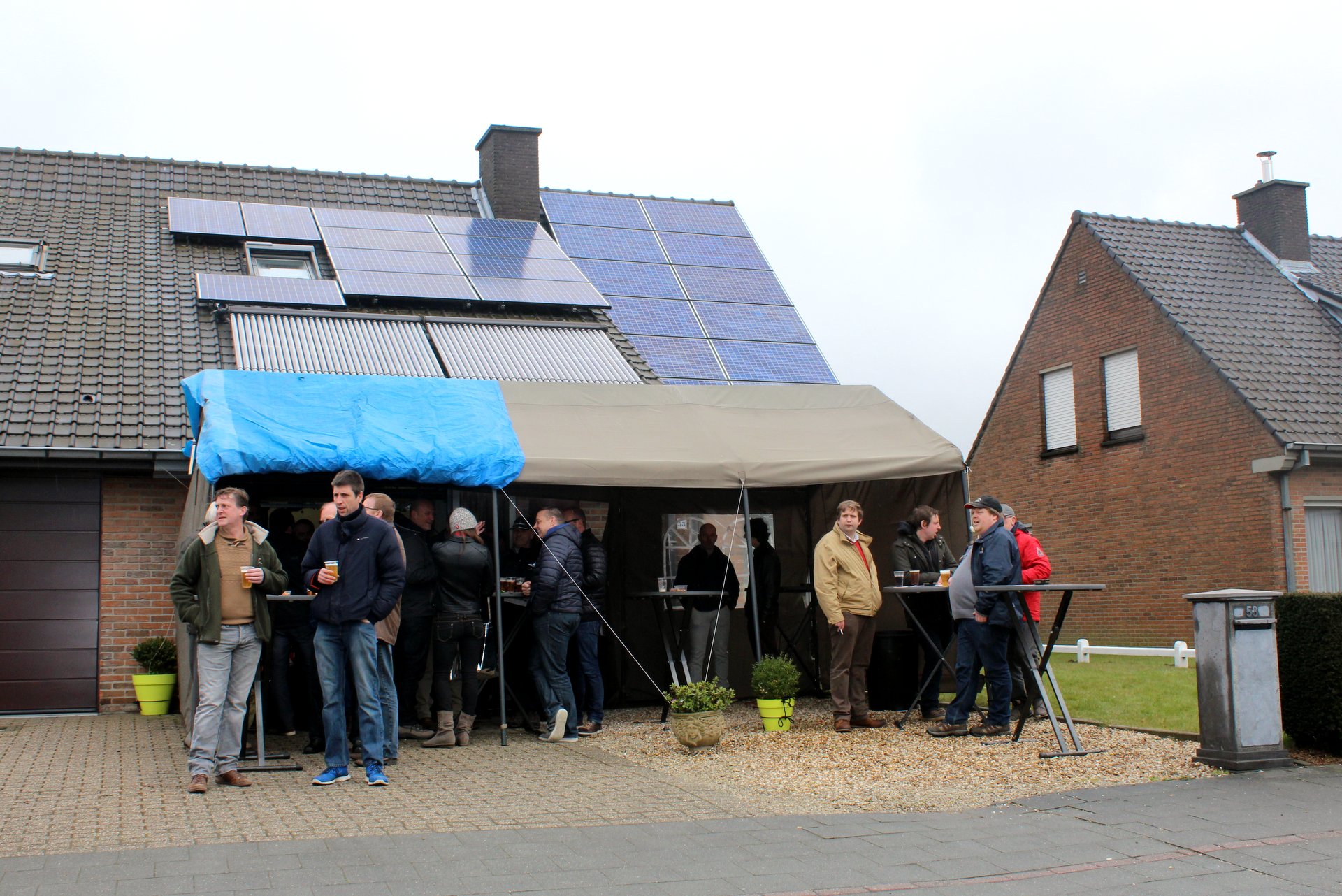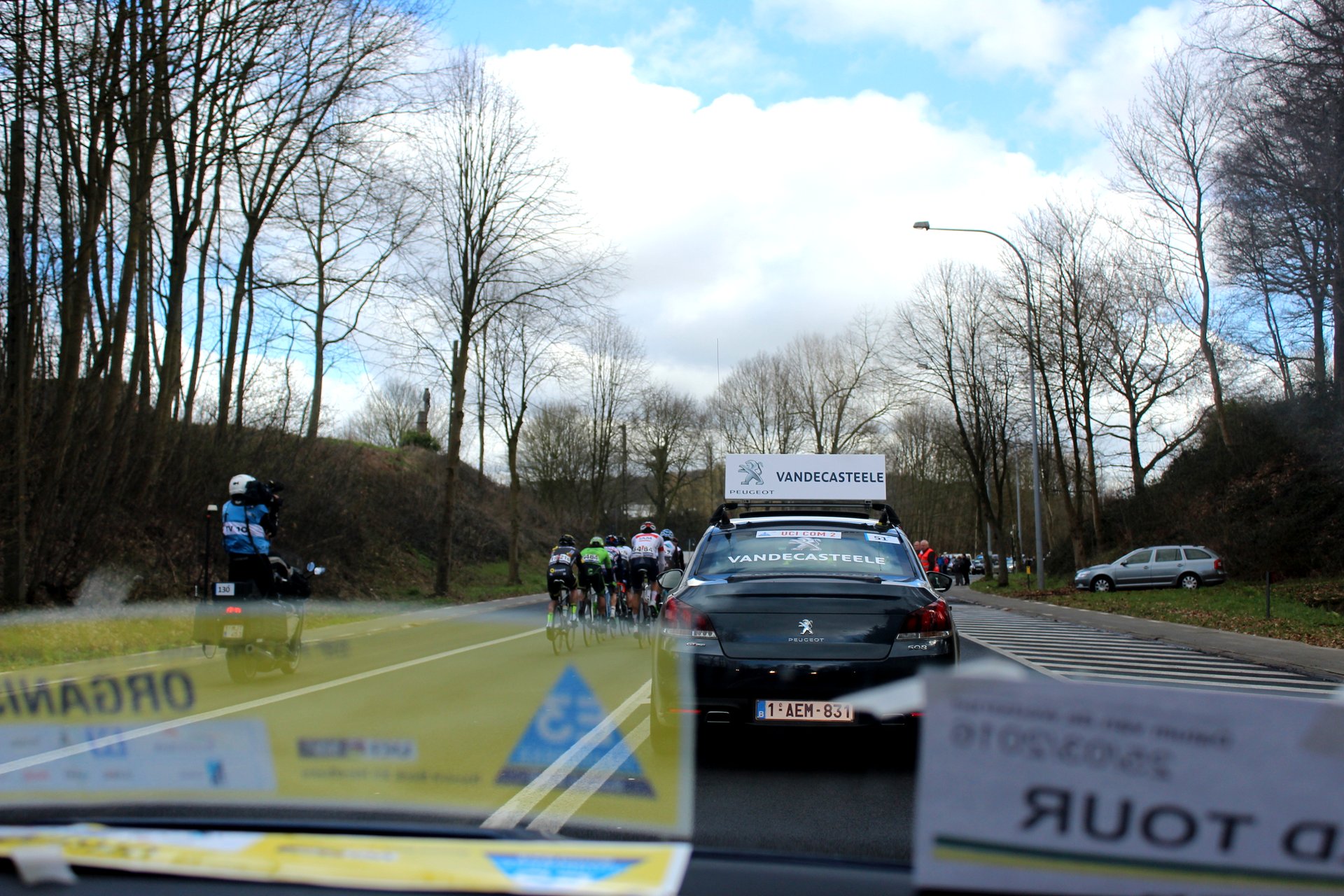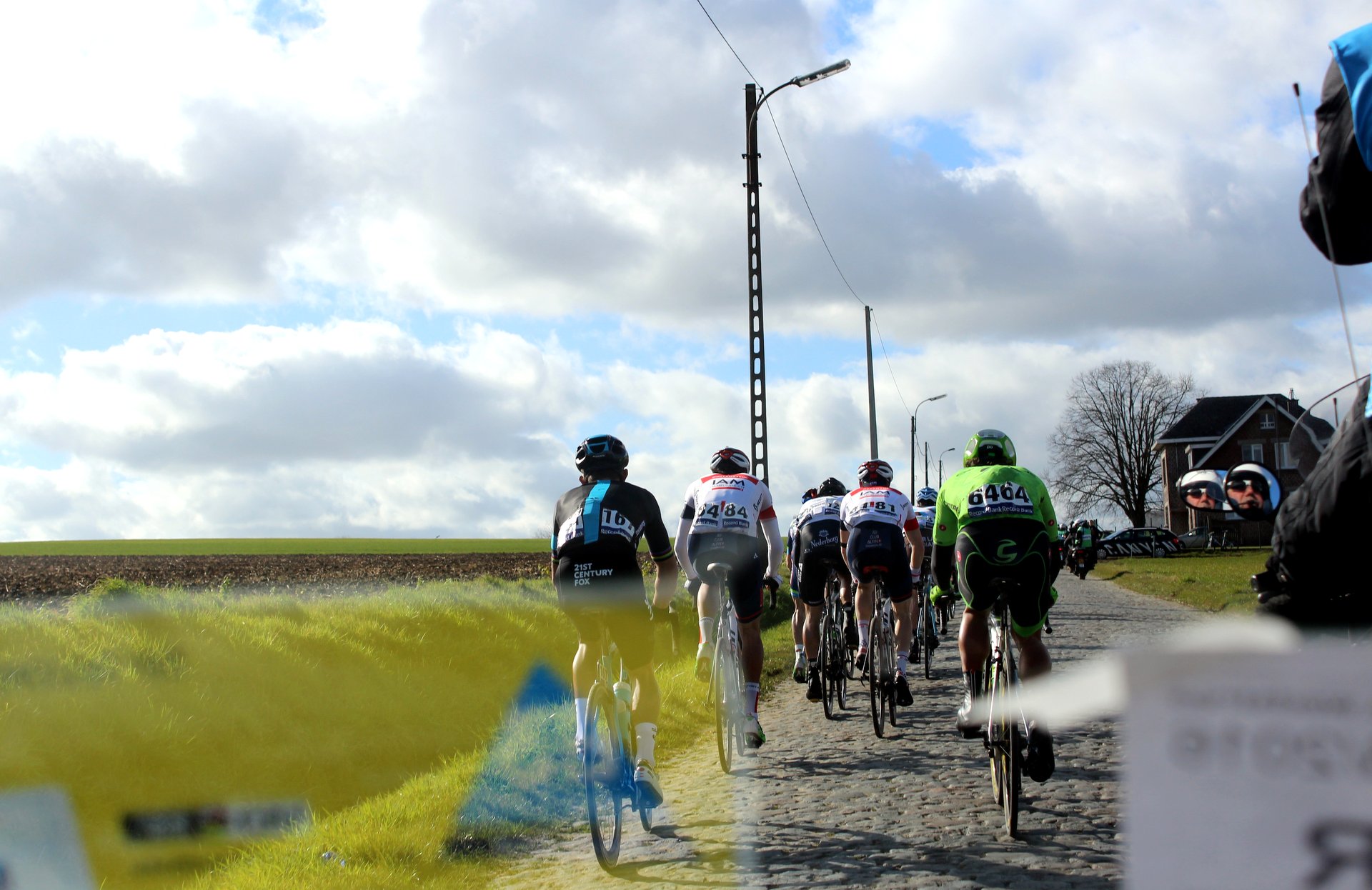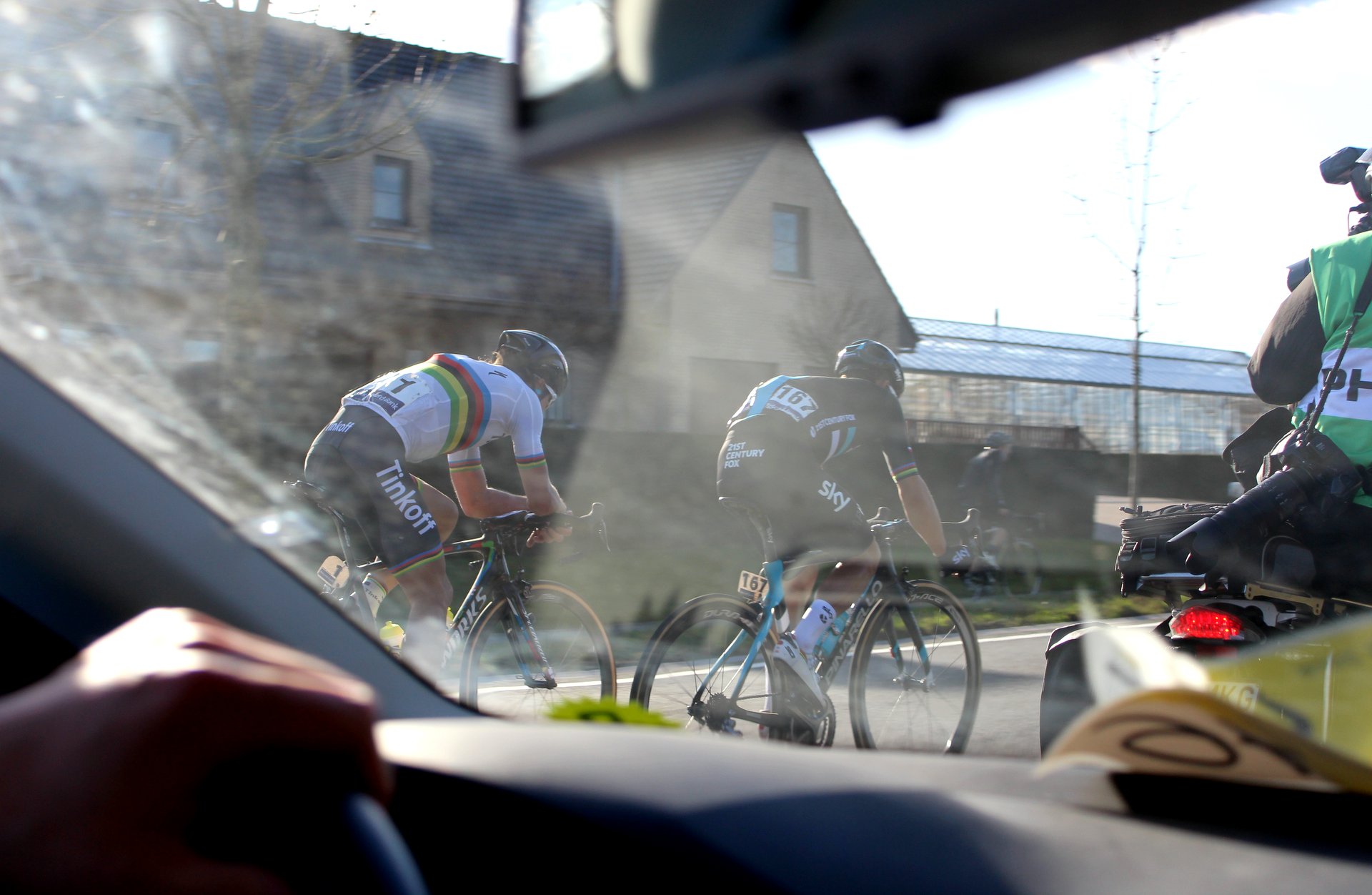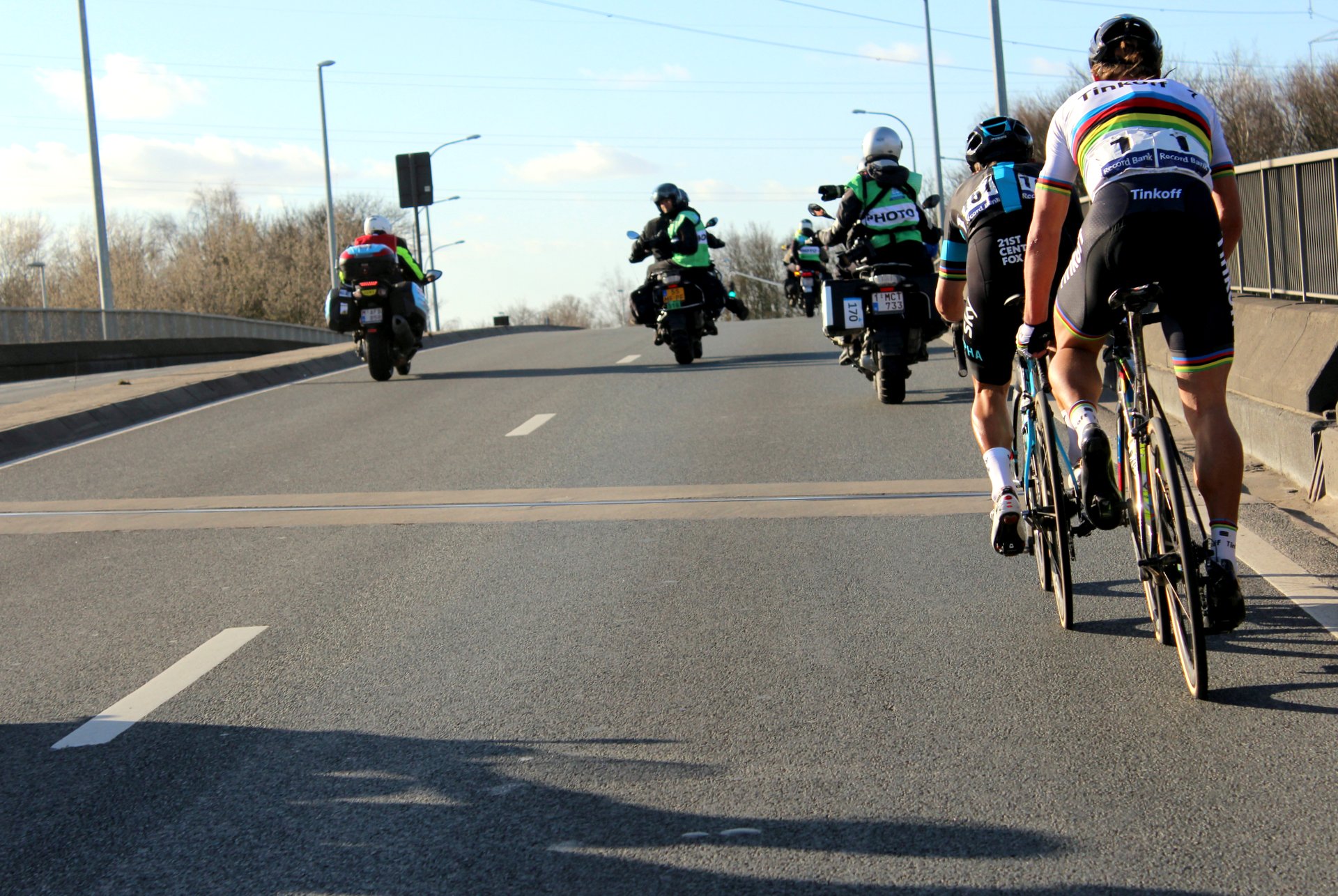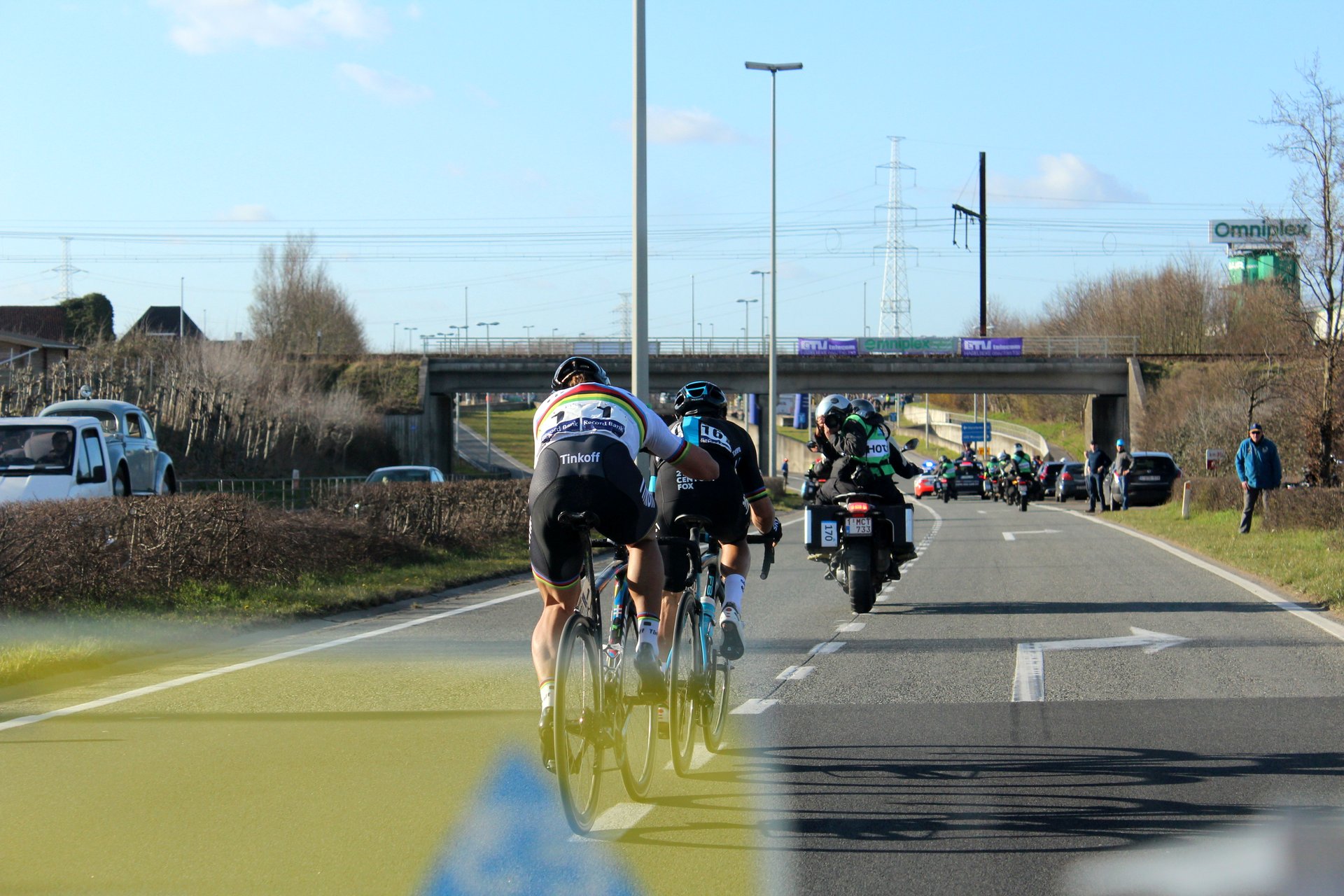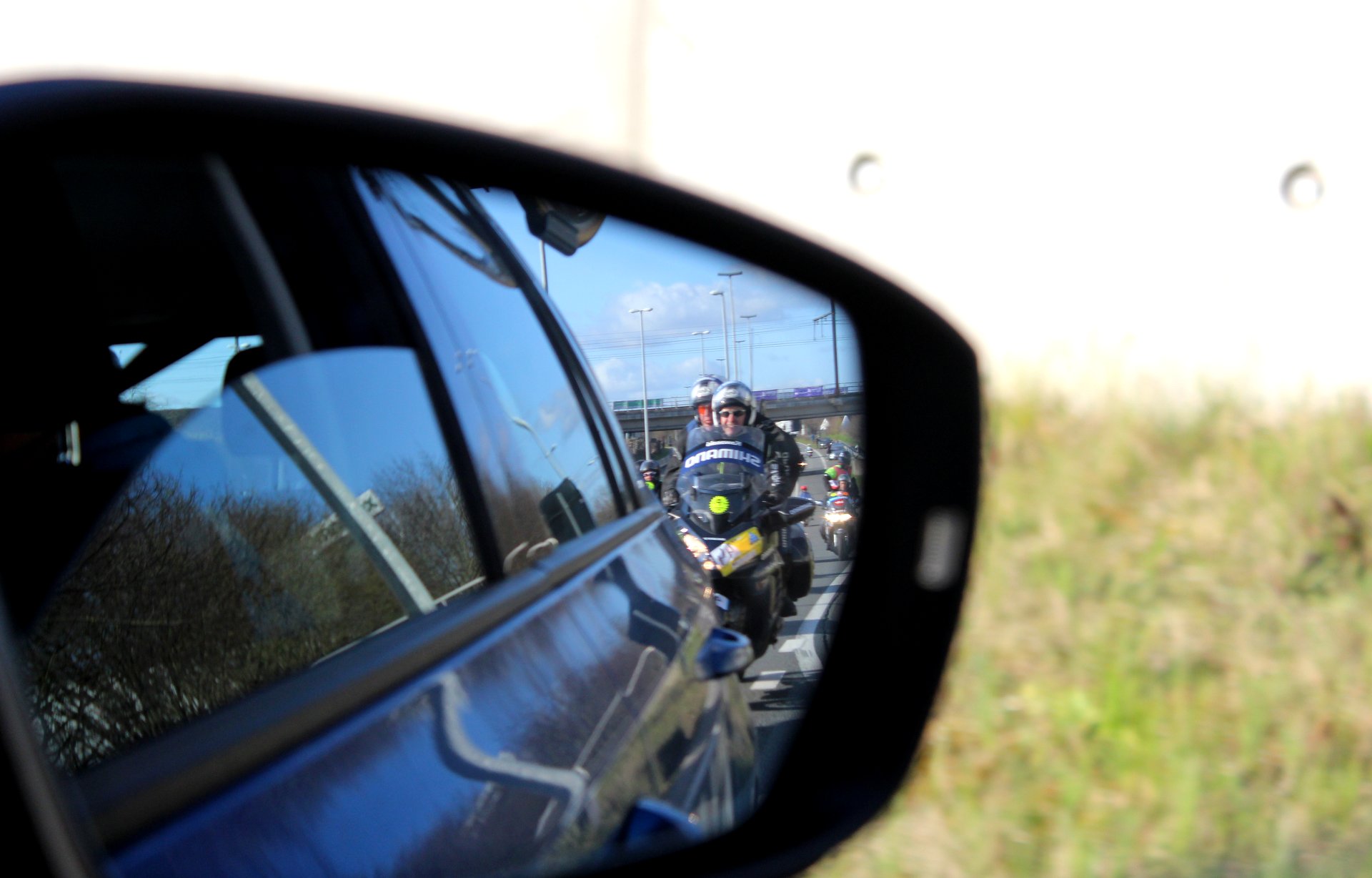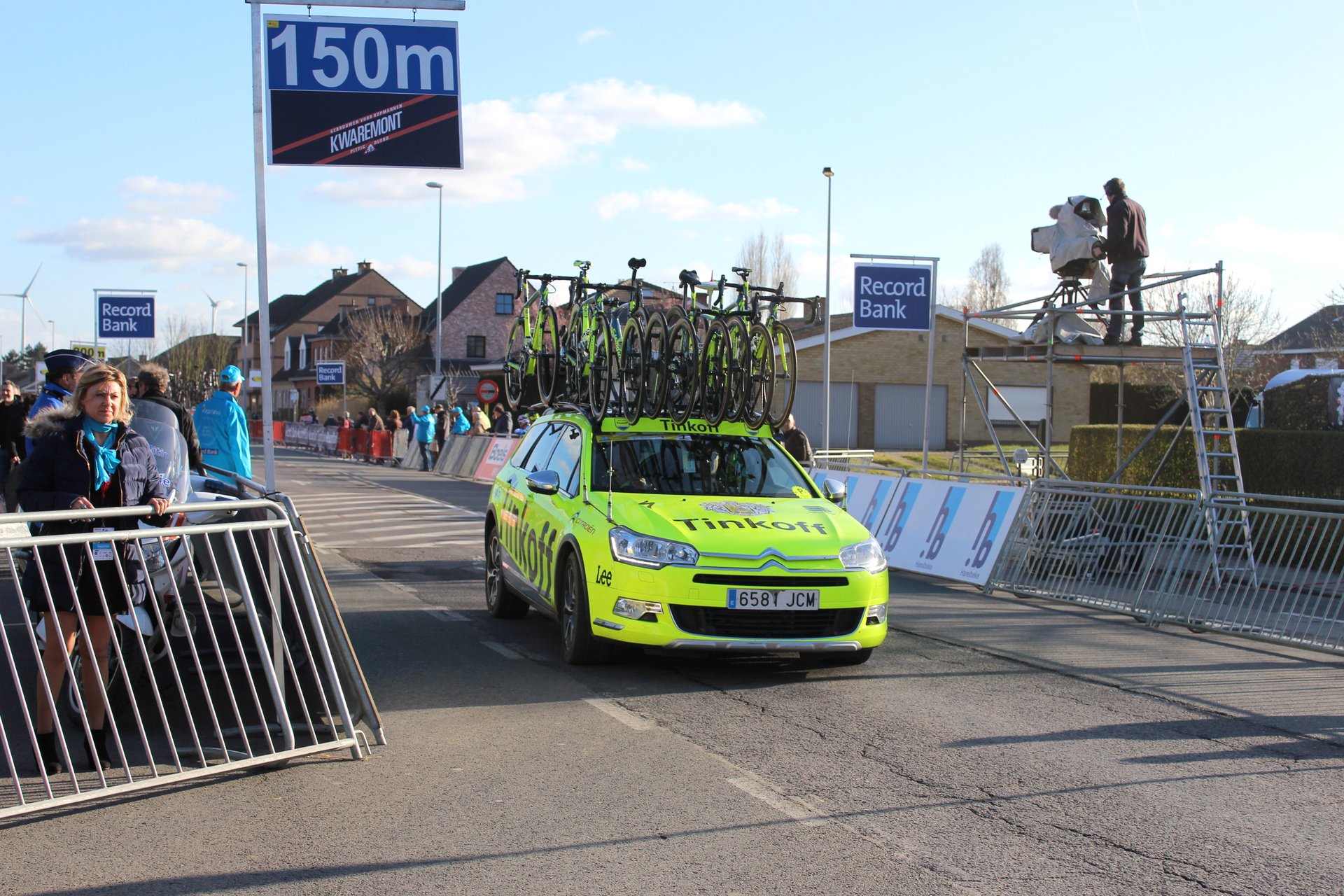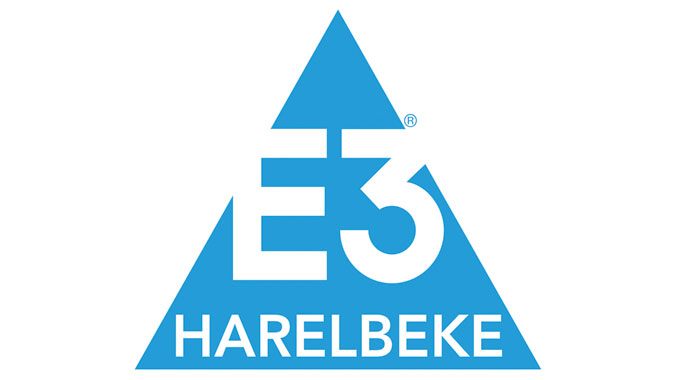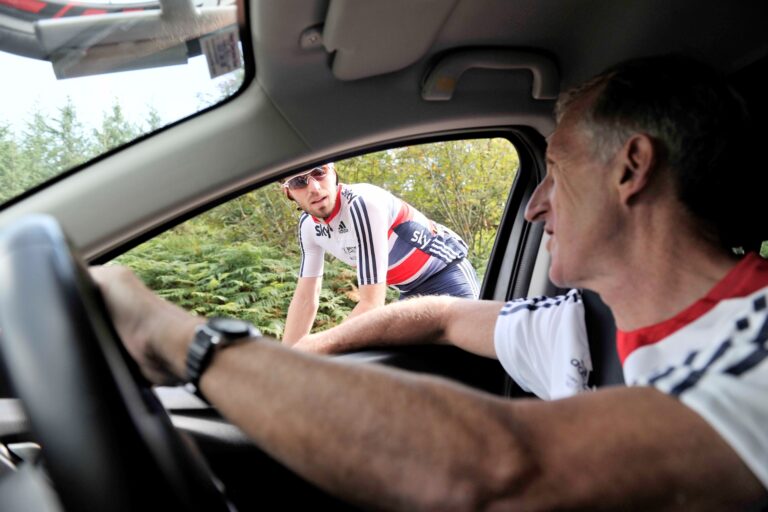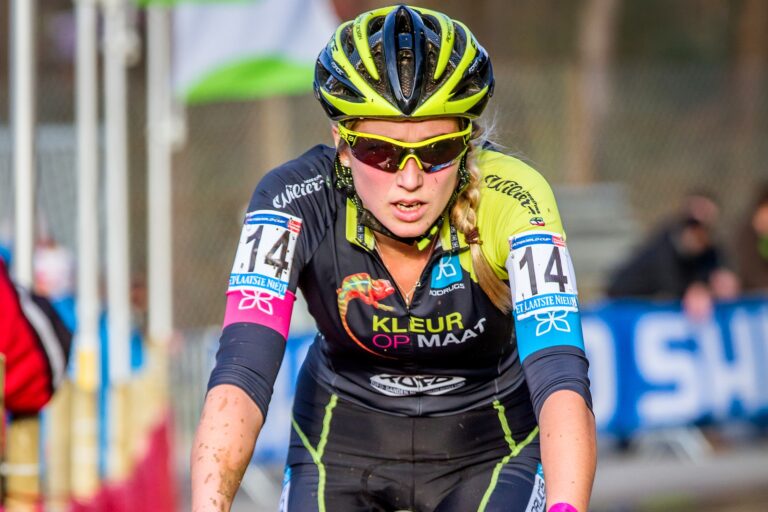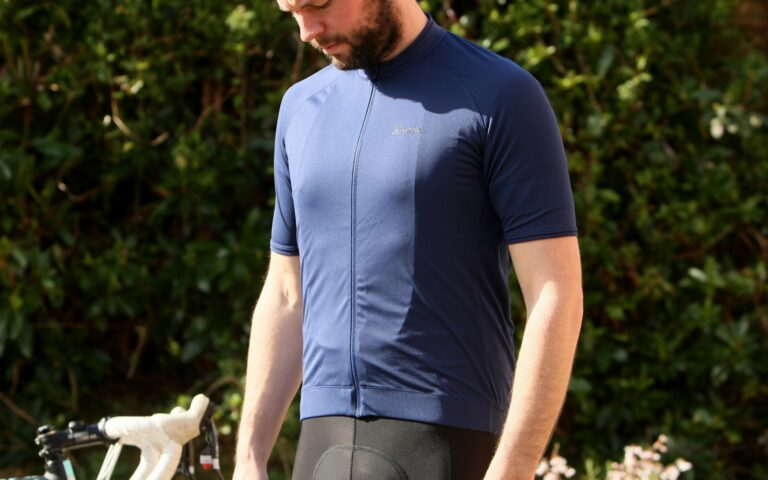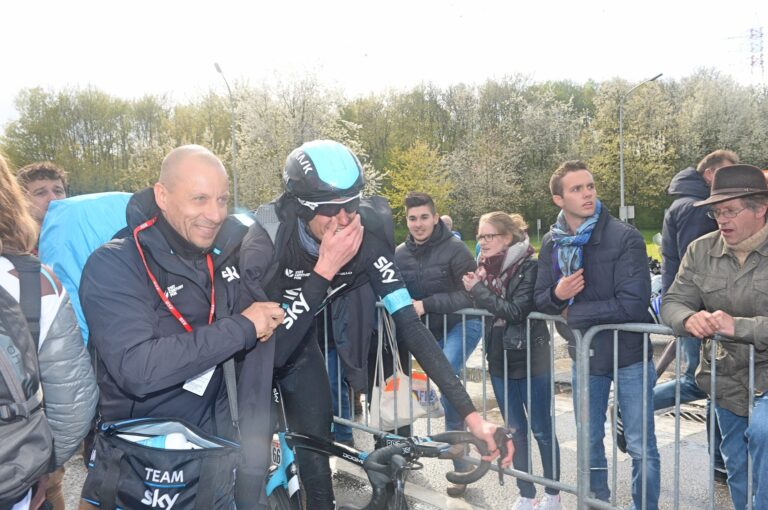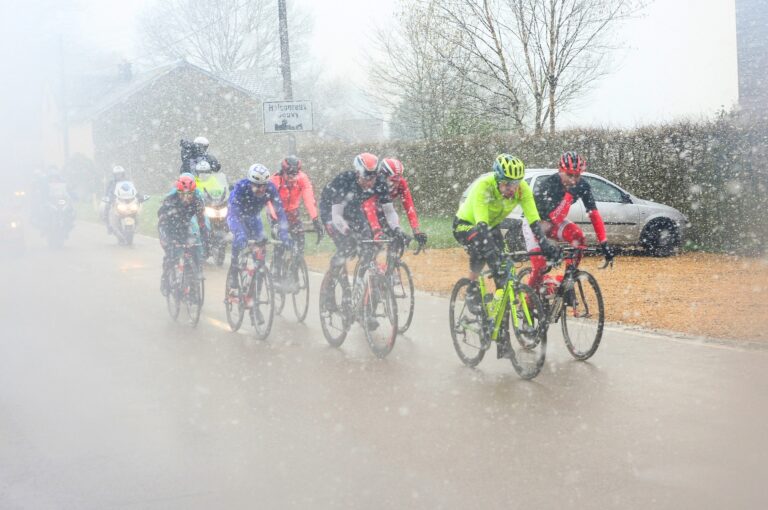We are waved up by the commissaires to communicate with a rider when he waves a hand. We pass messages back; a radio isn’t working, someone needs a drink. We wait.
Ultimately, however, the role of the Shimano Neutral Service is that of mechanical back-up, but one that teams and riders hope is never needed. The car carries three complete bikes on the roof; unbadged frames with Shimano Dura-Ace groupsets and a bunch of Dura-Ace C50 wheels, with more in the car and in the boot. We also carry a set of Shimano’s RX830 wheels, currently the top-end road disc brake wheelset from the Japanese manufacturer. Looking around the team buses before the race it seems the RX830s will remain unused today as none of the teams appear to be riding disc-equipped bikes.
Rudie is a skilful driver, zipping along the back roads of Belgium with motos surrounding him. On television you never really see the sheer volume of motorbikes involved in a race the size of E3. It seems like every motorcycle rider in Flanders has been pulled in. There are the obvious ones, carrying TV, radio, and photographers, flitting around the head of the race, on roads barely large enough for a single car. Every junction, every piece of road furniture has an outrider on, blowing their whistle and waving their flag. These guys (seemingly all males) perform an admirable job, rolling around the race at breakneck speed. So many of them.
The atmosphere in the car is one of steady tension throughout the race, with the radio informing us of progress and the action as it unfolds behind us. The mood is lightened as we hear about the second break coming together, it carries the likes of Tony Martin, Fabian Cancellara, Michal Kwiatkowski and the world champion, Peter Sagan. This is where the day’s winner will be coming from. The Shimano crew are resolutely professional, but they are cycling fans to the core, and the sound of these names means big things about to happen.
